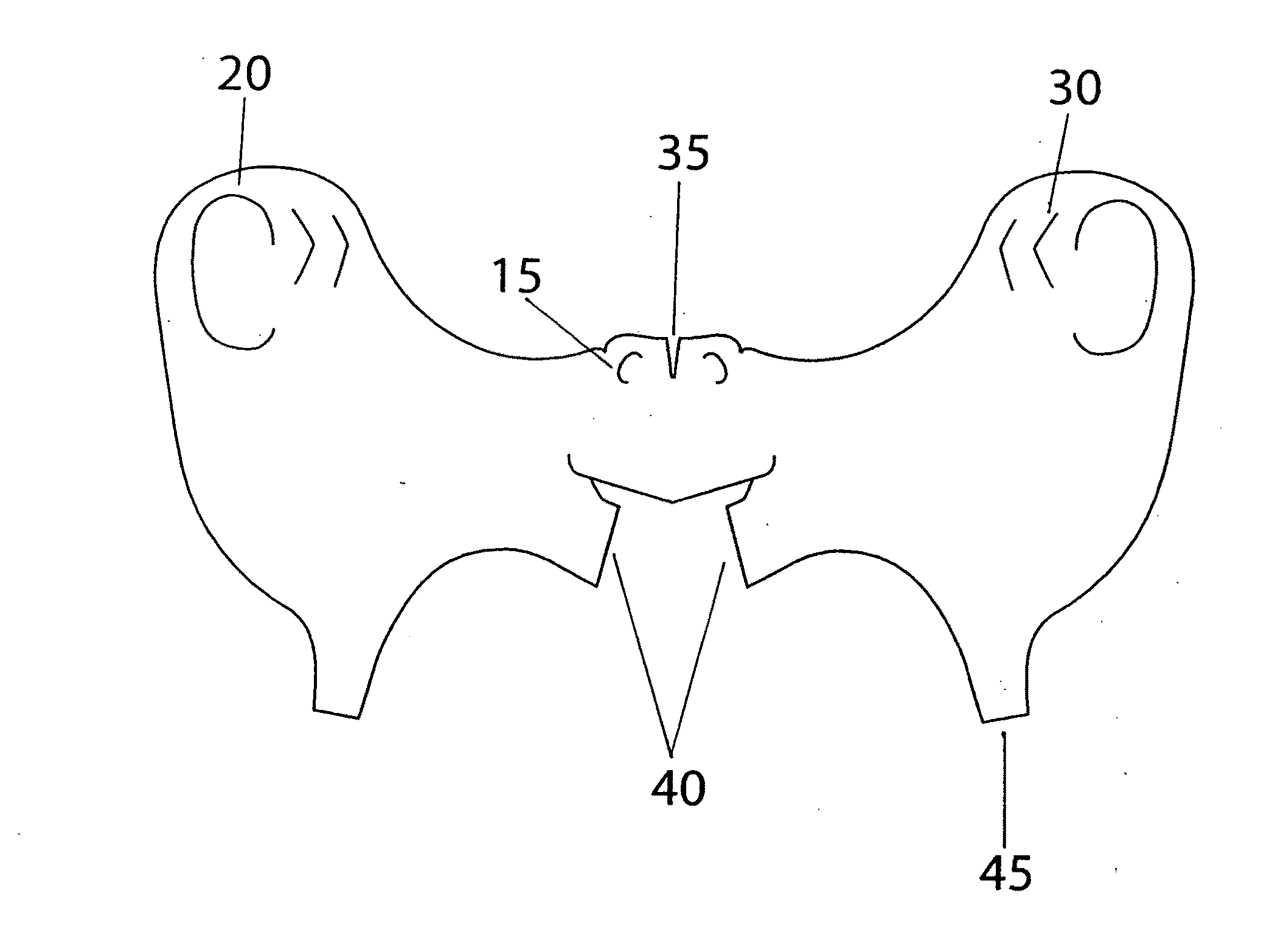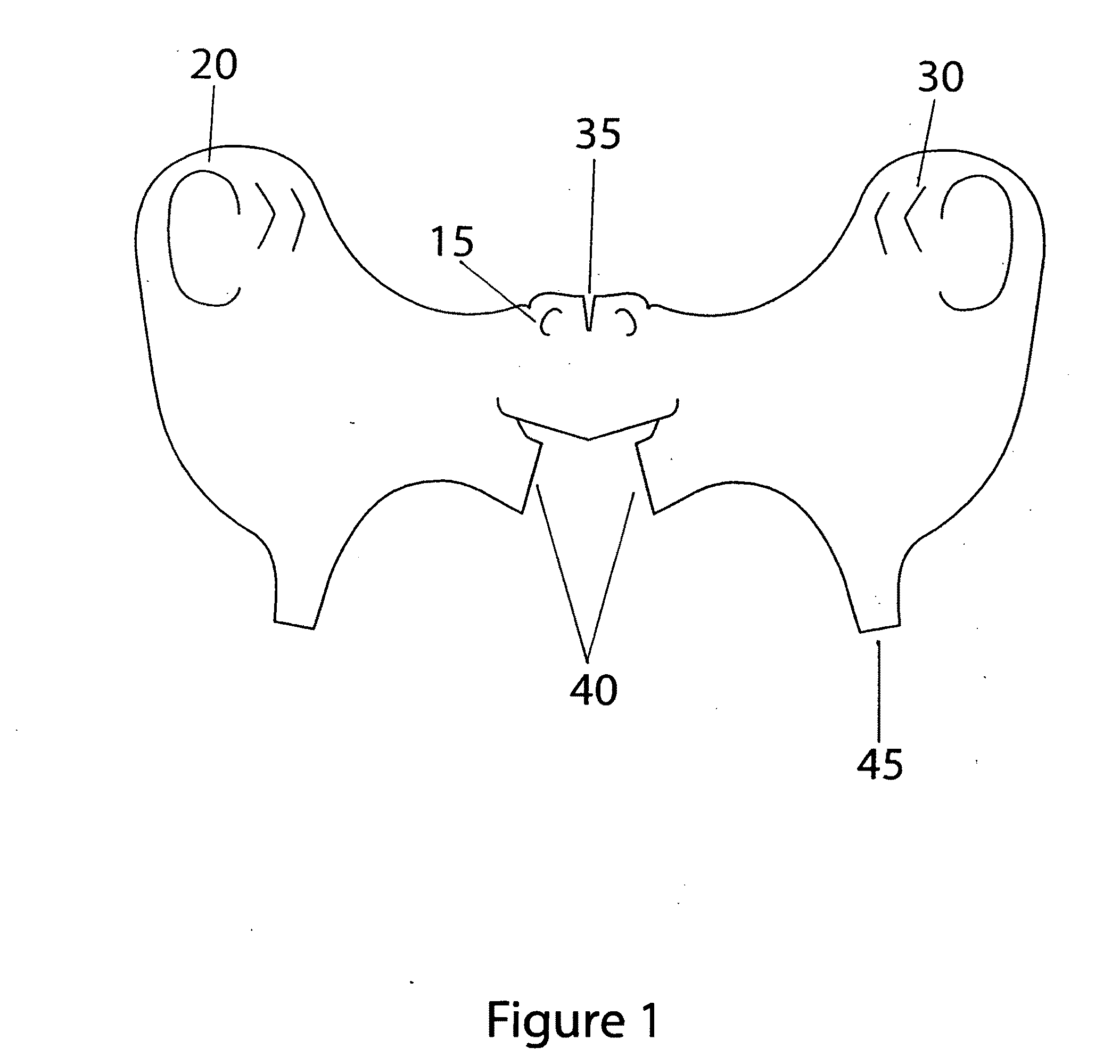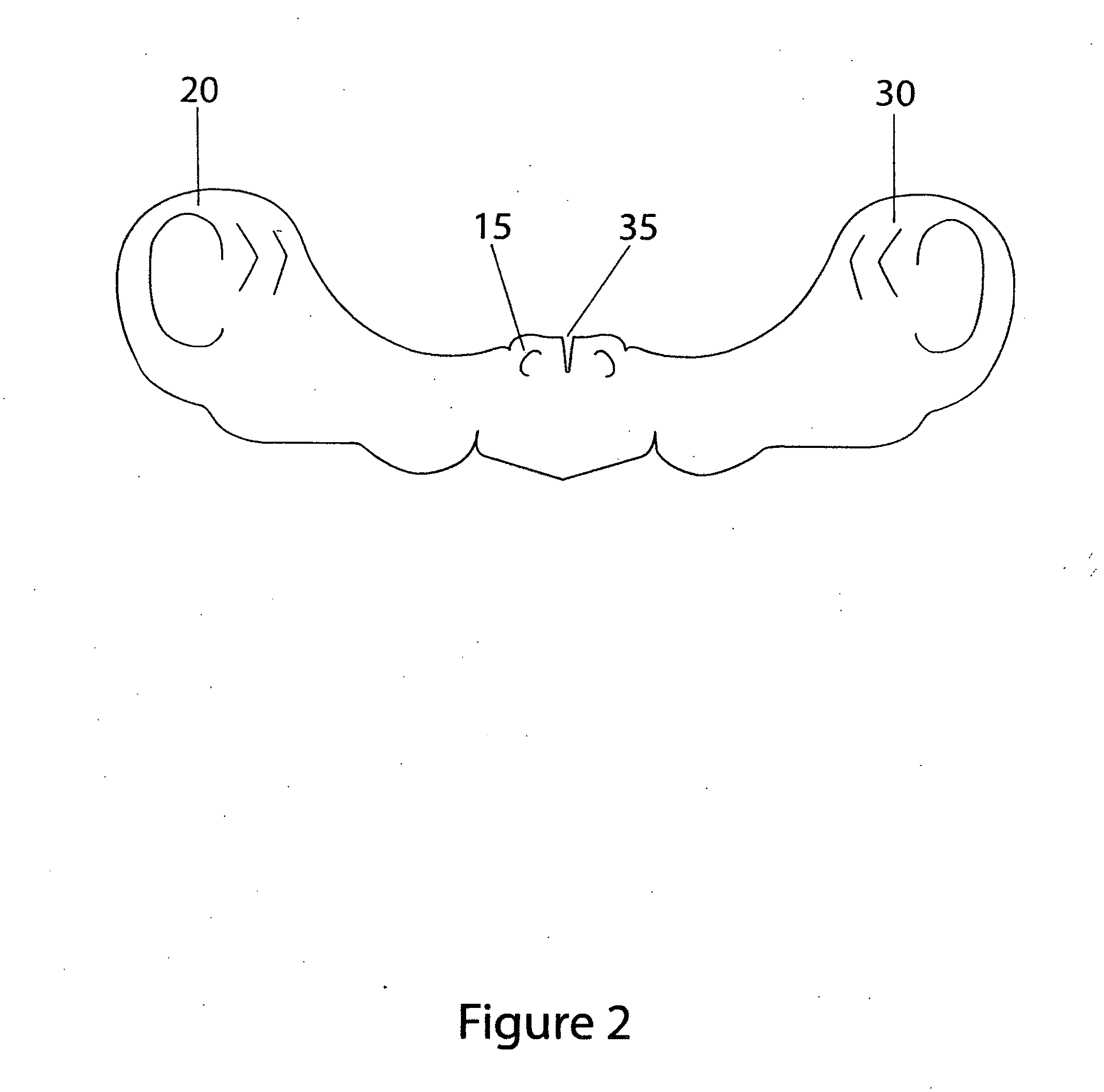Flexible face mask apparatus
a face mask and flexible technology, applied in the field of face masks, to achieve the effect of less facial coverag
- Summary
- Abstract
- Description
- Claims
- Application Information
AI Technical Summary
Benefits of technology
Problems solved by technology
Method used
Image
Examples
Embodiment Construction
[0034]In a preferred embodiment, the face mask of the present invention is constructed of three flexible, light, and durable layers: an outer first layer of fabric having a sun protective factor, an intermediate second layer of open cell foam material, and a third layer of micro suede or brushed nylon material that contacts the face. The outer first layer is such that it can be embossed, debossed, or sublimated with a desired image or print logo / design. The outer layer may be composed of spandex (e.g. polyurethane-polyurea copolymer). The intermediate layer can be breathable foam such as open-cell foam or perforated closed-cell foam (e.g. airprene). The foam layer may be about 0.25 inches thick prior to being compressed into a far thinner desired thickness. The third layer of micro-suede has a breathable, wicking effect that allows greater air exchange and acts against the discomfort and eyewear fogging caused by moisture buildup. The layers can be joined via a thermoforming process...
PUM
 Login to View More
Login to View More Abstract
Description
Claims
Application Information
 Login to View More
Login to View More - R&D
- Intellectual Property
- Life Sciences
- Materials
- Tech Scout
- Unparalleled Data Quality
- Higher Quality Content
- 60% Fewer Hallucinations
Browse by: Latest US Patents, China's latest patents, Technical Efficacy Thesaurus, Application Domain, Technology Topic, Popular Technical Reports.
© 2025 PatSnap. All rights reserved.Legal|Privacy policy|Modern Slavery Act Transparency Statement|Sitemap|About US| Contact US: help@patsnap.com



